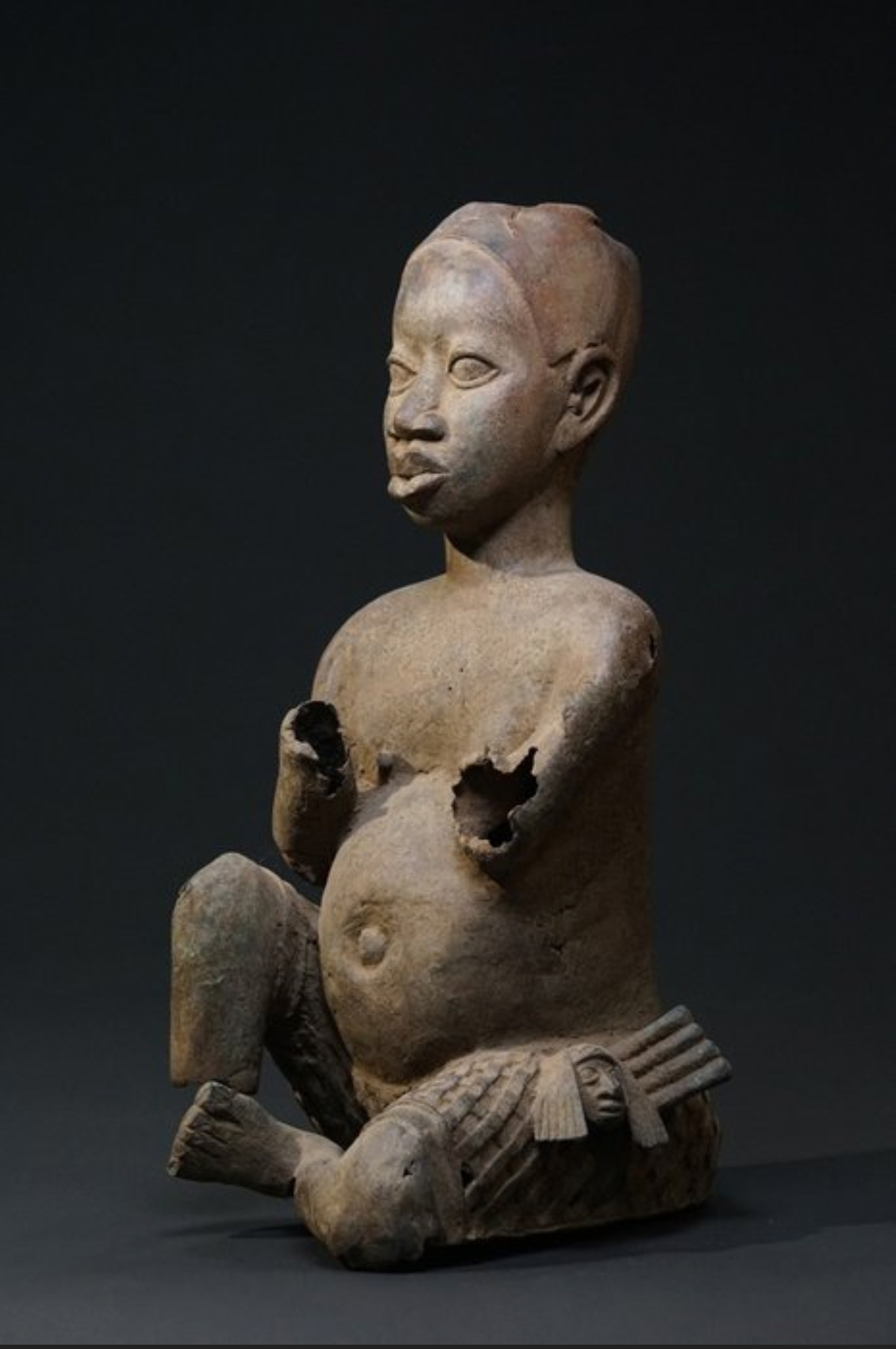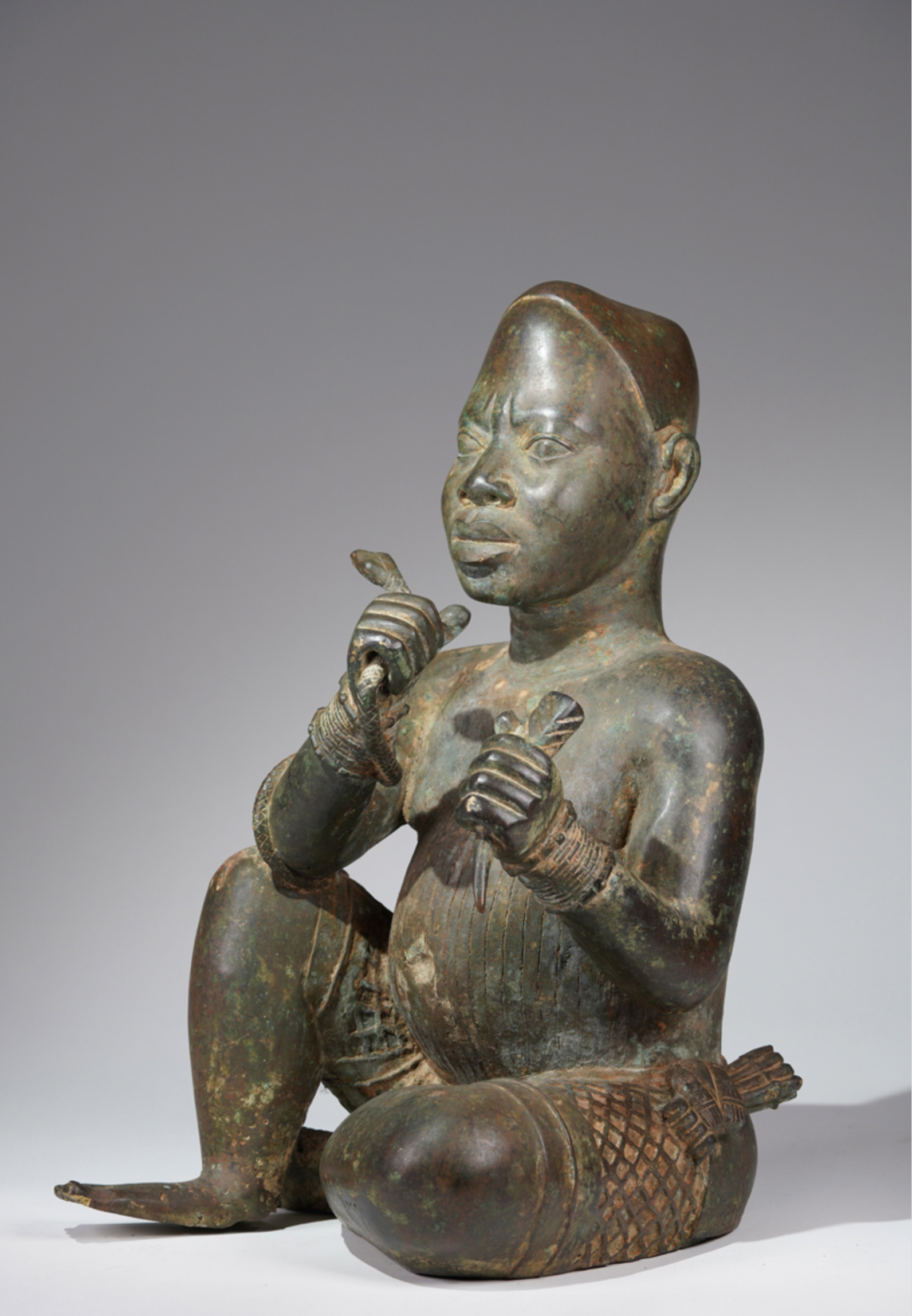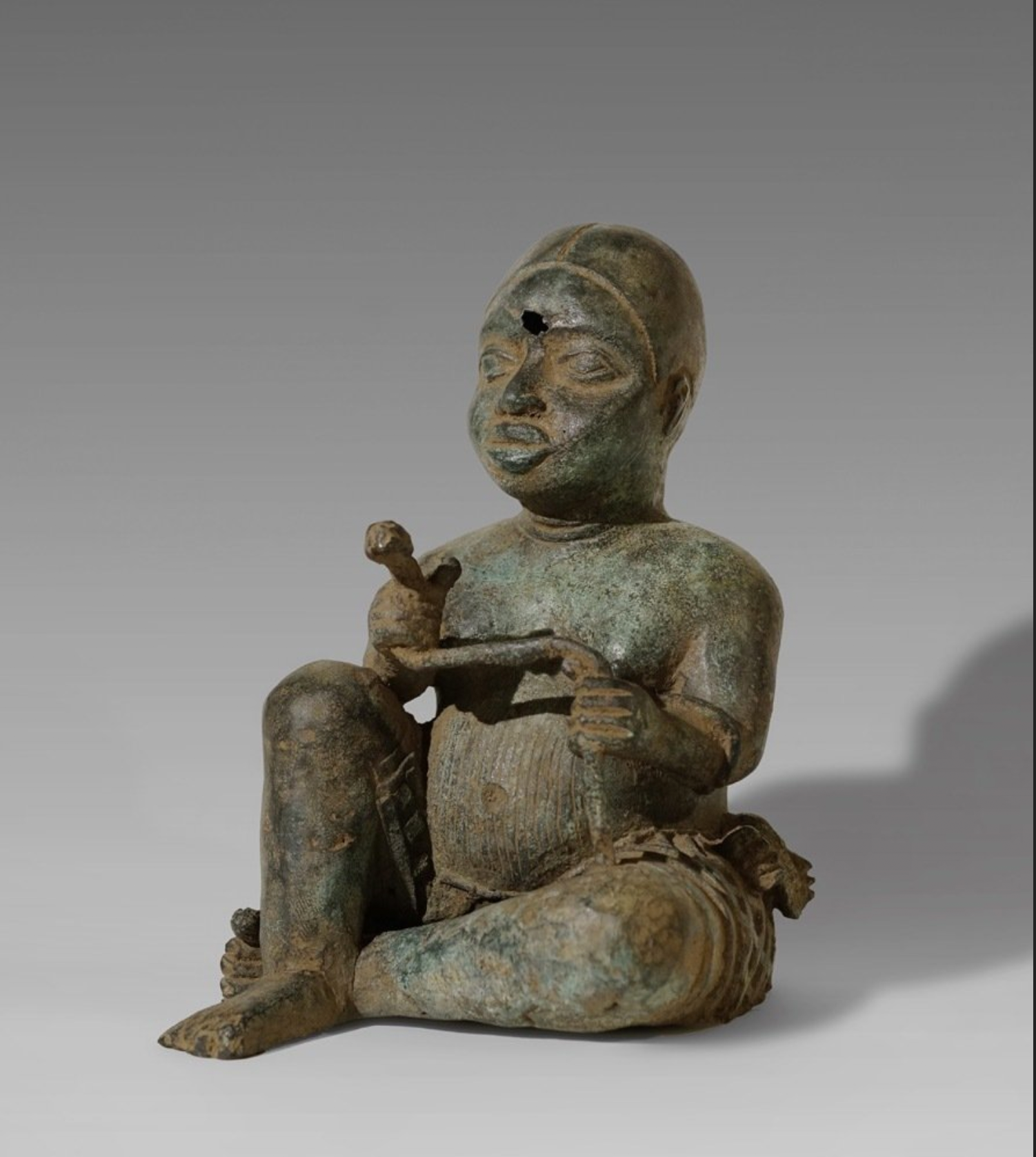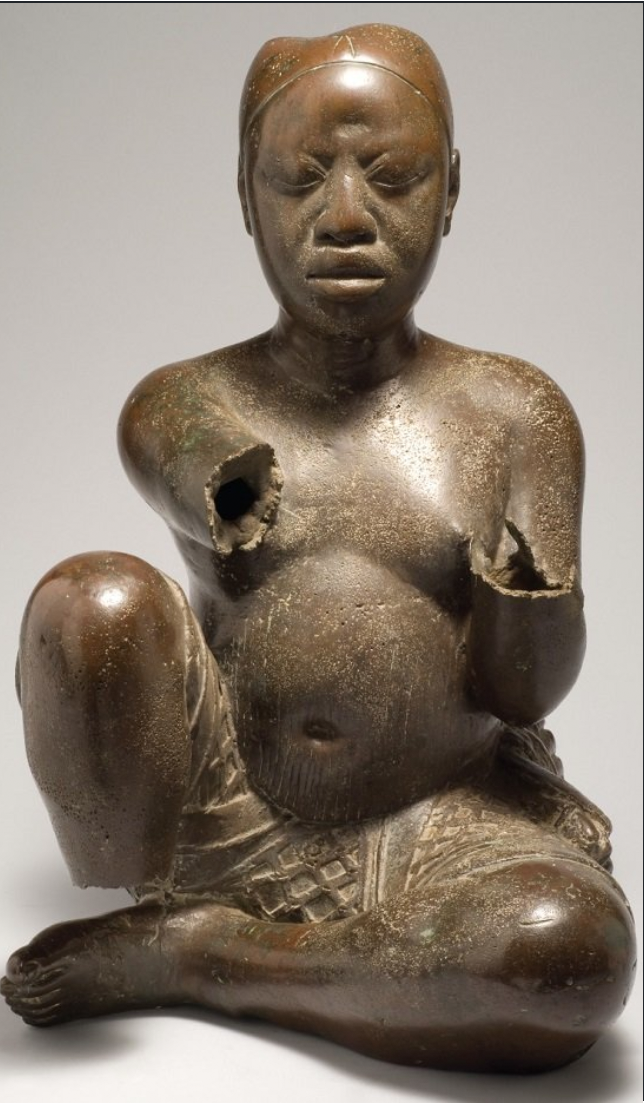wolfgang-jaenicke
A fragmentary Bronze sculpture in the style of Tada
A fragmentary Bronze sculpture in the style of Tada
Couldn't load pickup availability
A fragmentary Bronze sculpture in the style of Tada with an extremely smooth patina. The related famous exemplare was obviously deliberately destroyed, which is probably due to the influence of militant Islamism, which has now found its continuation in the reign of terror of Boko Haram and dominates this region. However, this reign of terror has now stopped destroying high-quality works of art and instead sold them to the art trade because they can fetch a considerable amount of money. Even though this sculpture was in a well-known collection in Togo for many years, it is likely that it is closely linked to the decline of animism and the aggressive advance of an intolerant Islamism. The condition of the surface suggests that it was in the ritual use - like mentioned above - for many years., provenance Aboulaye Ousmane, called Abdou Barré, Lomé Togo, it was since a long time in his collection.

Another fragmentary Tsoede bronze, we collected a couple of years ago.
Tom Phillips wrote in his book "Africa, the Art of a Continent" page 407, about the well-known version of this famous sculpture, which is obviously Ife related.
"This is without doubt the supreme masterpiece of the Ife smiths´art. Its proportions are naturalistic, whereas normally the head quarter or more of the height of the figure. The limbs and usually the torso are generally no more than cylinders, but here legs and remaining parts of the arms are very Ifelike. The figure wears a wrapper that is overlain with a net of beads. On the left hip a sash is tied around a folded cloth, perhaps the concerns of the wrappers. (There is a similar hip ornament in terracotta form a life-size figure from the Iwinrin Grove). Originally the right foot may have projected below the level of the base, which prompted William Fagg to suggest that it might have been intended to sit on a round stone throne (as cat. 5.66)...
Until recently this piece was kept in a shrine in the Nupe village of Tada on the river Niger 192 km north of Ife, where the villagers took it down to the river every Friday and scrubbed it with river gravel to ensure the fertility of their wives and of the fish on which they live.. This accounts for its smoothed appearance, Bernard Faggpersuaded the villagers that they were destroying the sculpture and with it the fertiliy they were trying to promote...
It is not clear why this piece and several others were found so far north. It may well be that its location indicates the ancient northern frontier of the kingdom of Ife. FW, Bibliography: Willet, 1967, pl 8
s. Tom Phillips, Africa Art, the Art of a Continent, page 407
Youtube video clip: Ife Tada Benin Djenne Adamaua Terracotta and Bronzes Wolfgang Jaenicke Gallery Berlin
The bronzes are divided into four groups. The first consists of the so-called Gara figures, two on Jebba Island, a male and a female, and one in Tada.
The second group consists of only the seated figure shown here, perhaps the most important naturalistic sculpture in Black Africa. Two other more recent-looking figures make up the third group, while the figures of two ostriches and an elephant form the fourth group. The male Jebba Gara figure better known as the Jebba Bowman and the Tada Gara male figure are believed to bear resemblance to Benin works because of the diadems on their foreheads which depict faces with snakes issuing from their nostrils, a common feature in Benin works. The Tada seated figure seems, in its naturalism and rigidity, to belong to the Ife school. The two more recent-looking figures from Tada have a combination of Yoruba and Benin traits while the ostriches and the elephant belong to a yet unidentified school. So, here we find at least four traditions of sculpture in bronze and their coming together suggests that they were accidentally assembled.
All the figures were still being used in rituals, in secondary contexts, in the places where they were located until they were temporarily taken into safety in the National Museum in Lagos. Source: Nigerianhouse
We know only two examples, one in an American private collection and one in Europe, which don´t have signs of violance like the well-known, in many books published fragmentary exemplare.

If the National Commission of Museums and Monuments in Abuja, Nigeria, is interested in this rare exemplare, we can speak about donation.
The Tsoede (also called Tada-bronzes) are linked to the Benin Kingdom, one of the great African kingdoms, known for its advanced urban planning, political structure, and art. The bronzes were likely produced by the skilled metalworkers who inhabited the area and are now considered a key part of the rich artistic heritage of the Benin Empire. The works also hold substantial historical value, as they often served as ceremonial and symbolic purposes.
Characteristics.The bronzes are renowned for their high level of craftsmanship and intricate detail. They are typically made using the lost-wax casting technique, which was a sophisticated method in which a wax model of the object is covered in clay and then heated to allow the wax to melt and drain, leaving a hollow mold for molten bronze to be poured into. This technique allowed for the creation of highly detailed and intricate sculptures.
Many of the Tsoede bronzes depict human figures, animal motifs, or abstract symbols, and they were often used in royal or religious contexts, either as offerings or as part of the royal regalia. Some of the common themes include:
1. Portraits of Royalty – These bronzes often feature depictions of kings or nobles, sometimes in elaborate attire or with symbolic regalia.
2. Animal Motifs – Animals, especially elephants and leopards, were common subjects, reflecting their importance in the kingdom's symbolism and governance.
3. Symbolism – The bronzes also depict symbolic elements tied to the spiritual and political life of the kingdom.
Significance
The Tsoede bronzes are considered one of the earliest examples of advanced metalwork in West Africa, and they stand as a testament to the region's long history of metallurgy, craftsmanship, and artistic expression. They are also part of the Benin Bronzes, a collection of plaques and sculptures that are historically important, though the term "Benin Bronzes" is often used more broadly to refer to the numerous works produced in Benin during the 13th to 19th centuries.
These bronzes are not only valuable for their artistic merit but also for what they tell us about the social and political organization of the Benin Kingdom, its religious practices, and its interactions with other cultures.
A few years ago we collected probably a recent figurine with an artificial patina in the same sitting position, which to this day has attracted a great deal of attention on the internet. One foot touched the ground and the other was parallel to it. In this case arms and legs were intact and the figure held a snake in its hands.
Is it conceivable that the damage to the figure right presented here was intentional? The deformations of the arm swamps show more than mere erosion. They show - at least on the arms - clear signs of violence. Snakes have been a symbol of power and domination for centuries, especially in traditional Africa. If a character is deprived of this symbol, it loses its magic power. Couldn't the missing left foot be interpreted in a similar way, in that the figure has lost its contact with the earth by breaking off the foot? This could perhaps be interpreted as another sign of de-ritualization.
This well-known Tada sculpture was described as:
"The style and the extraordinarily thin casting of this naturalistic figure point to its likely creation at Ife..
Height:60 cm
Weight: 14,4 kg






































